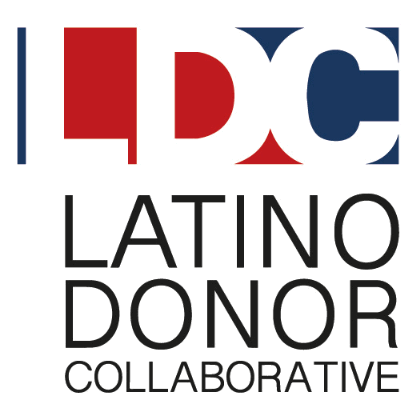Research
Digital Makes The AM/FM Radio Plan Better And Vice Versa

New research from Nielsen shows why a blend of digital ad platforms and AM/FM radio is one of the most powerful combinations in media. Some of the largest studies ever conducted on advertising effectiveness have found as the number of media platforms utilized increases, effectiveness and sales effect grow. By Pierre Bouvard
Social currency: How much is a World Cup influencer worth?

The 2022 FIFA World Cup—a month-long football marathon featuring 64 matches—will attract an estimated 5 billion viewers worldwide1. And the reach of the World Cup extends far beyond the field, with team and player updates, predictions and other content taking over screens and, increasingly, social feeds in the months surrounding the event.
Viewers Looking Forward to World Cup Despite Controversy [REPORT]

These controversies, however, do not appear to have diminished fans' interest in the quadrennial event, especially here in the U.S., with athletes returning to the tournament after failing to qualify in 2018. This, along with an overall increase in interest in soccer in the U.S., will likely result in strong viewership.
The 2022 LDC Latino in Media Report [REPORT]

Economically, U.S. Latinos are a powerful driving force in the success of the American economy, second only to the Anglo cohort.
Hardships and Wealth Disparities Across Hispanic Groups

Half of Hispanics of Dominican and Salvadoran origin in the United States experienced material hardship in 2020, according to recently released U.S. Census Bureau data
Hispanics feel Invisible & Stereotyped in TV & Movies

This National Hispanic Heritage Month AIMM shines the spotlight on the importance of authentic cultural representation in the entertainment industry
The State of Soccer [REPORT]

NBCUniversal Telemundo Enterprises released a timely report titled The Future Is Fútbol to define and characterize the fundamental shift in the importance of soccer in mainstream American sports and the role Latinos are playing in this economic, cultural and media phenomenon. The Future Is Fútbol report draws on primary and secondary research and data collection, including quantitative surveys and an innovative neuroscience study among bilingual Hispanics.
Teens, Social Media and Technology 2022 [REPORT]

The landscape of social media is ever-changing, especially among teens who often are on the leading edge of this space. A new Pew Research Center survey of American teenagers ages 13 to 17 finds TikTok has rocketed in popularity since its North American debut several years ago and now is a top social media platform for teens among the platforms covered in this survey. Some 67% of teens say they ever use TikTok, with 16% of all teens saying they use it almost constantly. Meanwhile, the share of teens who say they use Facebook, a dominant social media platform among teens in the Center’s 2014-15 survey, has plummeted from 71% then to 32% today.
Baby Boomers Nearly 9 Times Wealthier Than Millennials

Wealth is the value of assets owned minus the liabilities (debts) owed. As described in a previous report on household wealth in 2017, the new U.S. Census Bureau report and detailed tables on household wealth in 2019 show similarly wide variations across demographic and socioeconomic groups but also detail generational wealth differences for the first time.
Where People Move as Young Adults

Nearly six in 10 young adults live within 10 miles of where they grew up, and eight in 10 live within 100 miles, according to a new study by researchers at the U.S. Census Bureau and Harvard University.
Global population projected to exceed 8 billion in 2022; half live in just seven countries

The world’s population will cross 8 billion in November, according to recently released projections from the United Nations. And more than half of all people live in just seven countries.
Young adults in U.S. are much more likely than 50 years ago to be living in a multigenerational household

Multigenerational living – that is, living in a household that includes two or more adult generations, typically consisting of those ages 25 and older – has increased among all age groups over the past five decades. But the increase has been fastest among adults ages 25 to 34. In 1971, similar shares of adults across age groups lived in a multigenerational household, but by 2021, young adults were far more likely than older Americans to have this type of living arrangement.
Ad Engagement Increases With Each Audio Exposure

The results are especially powerful in a media landscape where advertisers are yearning for audience attention. Audio simply does not erode. It hooks listeners right out of the gate and delivers strong engagement and consumer action at even the highest levels of exposure.
Broad Variations in Age Structure By State and County

Florida’s median age in 2021 was 42.7, higher than the national median of 38.8 and that of neighboring Georgia (37.5). But even within Florida, the age structure varies widely, from 32.1 in Leon County to 68.3 in Sumter County — the highest median age of any county in the nation.
Nearly Six in 10 U.S. Workers Say Their Paycheck Is Not Enough to Support Themselves or Their Families

Nearly six in 10 U.S. workers are concerned their paycheck is not enough to support themselves or their families as employees look to keep up with the rise of inflation, according to the latest American Staffing Association Workforce Monitor online survey.
Local Broadcast TV Influences Hispanic Audiences

The 2022 GfK TVB Video Media and Usage Study, found that Hispanics have more digital access to live TV and local news than the average adult. Eighty-two percent of Hispanic adults 18+ are able to stream live programming and sports from broadcast channels on their devices (smartphone, tablet, PC) through an app from their cable or virtual streaming provider. That’s higher than all adults 18+ (69%). In addition, 59% of Hispanic adults 18+ have a broadcast TV station news app on at least one TV versus 36% of adults 18+.
Media Companies Expanding Spanish-Language Content for Growing Latinx Audiences

As the streaming ecosystem evolves and Latinx audiences continue to grow, the Spanish-language television landscape is transforming dramatically.
Nation Continues to Age as It Becomes More Diverse

The last two decades have seen the country grow continuously older. Since 2000, the national median age – the point at which one-half the population is older and one-half younger – has increased by 3.4 years, with the largest single-year gain of 0.3 years coming in 2021, bringing it to 38.8 years, according to newly released 2021 Population Estimates from the U.S. Census Bureau. Median age for most states also increased from 2020 to 2021, indicating their populations are getting older overall.
Edison Research’s “Share Of Ear” Q1 2022: Among Registered Voters, AM/FM Radio Dominates Ad-Supported Listening With A 75% Share, Podcasts And AM/FM Radio Streaming Surge, And AM/FM Radio Has An 89% Share In The Car

The Q1 2022 report provides an opportunity to study listening among key voter segments and examine ad-supported audio use by location and demographic.
Global 2022 Gen Z and Millennial [REPORT]

They are struggling with financial concerns, while trying to invest in environmentally sustainable choices. They feel burned out, but many are taking on second jobs, while pushing for more purposeful—and more flexible—work. They press their employers to tackle climate change, particularly when it comes to efforts they can get directly involved in, but businesses may still be missing opportunities to drive deeper and broader climate action. And they have inspired organizations to take action to address workplace mental health challenges, but many don’t feel this is resulting in any tangible change for employees.




























